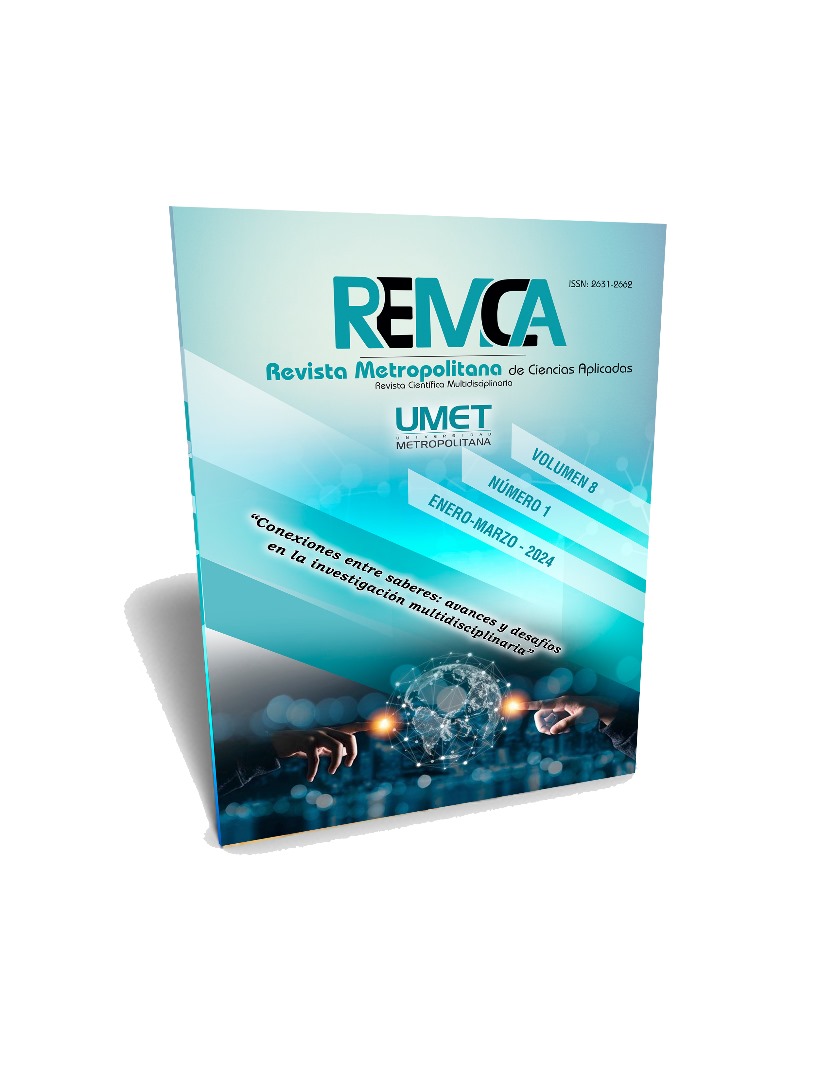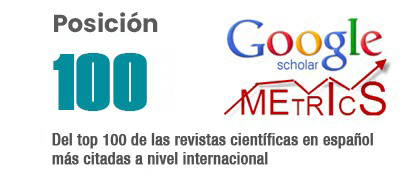Keratoconus in the community of Tulcán, Carchi province, Ecuador, 2022
DOI:
https://doi.org/10.62452/v4wws002Keywords:
Keratoconus, corneal signs, topographyAbstract
Keratoconus is a bilateral, non-inflammatory degeneration that causes an increase in corneal curvature and is accompanied by irregular astigmatism. In order to characterize patients with keratoconus treated at Opticas Tulcán in the province of Carchi, Ecuador, from March to August 2021, an observational, descriptive, cross-sectional study was carried out. 48 patients diagnosed with keratoconus were studied. Sociodemographic variables such as age, sex, and clinical variables were studied, such as a history of ocular and general diseases, clinical signs, topographic values, and degree of keratoconus, for which the distribution of absolute frequencies and the percentage were produced as a summary measure. The data was processed using the statistical package SPSS version 19.0 for Windows and later tabulated or graphed. It was observed that the age group with the highest frequency was between 20 and 24 years of age (35.41%) with a predominance of the male sex. An insignificant percentage of family history of keratoconus was determined, 39.58% of the sample did not present associated general diseases and from the ocular point of view allergic keratoconjunctivitis predominated. Grade I keratoconus was the most representative, with the most evident topographic pattern being the symmetrical central cone and the most relevant sign being the Fleischer ring. There was a predominance of moderate visual impairment in 39 patients. Keratoconus is a real problem in patients treated at Opticas Tulcán, requiring early diagnosis and timely treatment.
Downloads
References
Alonso Sáez, V. (2020). Asfericidad y profundidad de campo en las córneas con distintos grados de queratocono. (Trabajo de fin de grado). Universidad de Valladolid.
Benítez Merino, M., López Dorta, N., Cárdenas Díaz, T., Guerra Almaguer, M., Noriega Martínez, J., & Castillo Pérez, A. (2019). Topoaberrometría en pacientes con queratocono. Revista Cubana de Oftalmología, 32(2). https://revoftalmologia.sld.cu/index.php/oftalmologia/article/view/735
Bonini, S., Coassin, M., Aronni, S., & Lambiase, A. (2004). Vernal keratoconjunctivitis. Eye, 18(4), 345-351. https://doi.org/10.1038/sj.eye.6700675
Calderón Portillo, E. M., & Picén Pimentel, M. (2018). Caracterización epidemiológica,clínica y terapéutica de pacientes con diagnósticode queratocono. (Tesis de titulación). Universidad de San Carlos de Guatemala.
Castro Cárdenas, K., Puentes Expósito, R., Zayas Ribalta, Y., Díaz Díaz, Y., Pita Alemán, N., Cáceres, V., & K. (2018). Características clínico-epidemiológicas del queratocono en la edad pediátrica. Mediciego, 24(2). https://revmediciego.sld.cu/index.php/mediciego/article/view/917/1254
Jareño Ochoa, M., Pérez Parra, Z., Castillo Pérez, A., Padilla González, C., León Rodríguez, Y., & De los Santos Arroniz, K. (2020). Modificaciones refractivas luego del tratamiento del queratocono con crosslinking corneal en ocho años de evolución. Revista Cubana de Oftalmología,, 33(1). http://scielo.sld.cu/scielo.php?script=sci_arttext&pid=S0864-21762020000100008&lng=es&tlng=es
Mahmoud Chbih, O. (2018). Perfil clínico de los pacientes diagnosticados de queratocono en la clínica Eurocanarias Oftalmológica. (Tesis de maestría). Universidad de Valladolid.
Mariño Hidalgo, O. M., García Pérez, R., Leyva García, Y., Carballo Hechavarría, B., & Castro León, Y. (2012). Topografía corneal en pacientes atendidos en Consulta de Cirugía Refractiva. Correo Científico Médico, 16(1). https://www.medigraphic.com/pdfs/correo/ccm-2012/ccm121j.pdf
Marrero Rodriguez, E., Sánchez Vega, O., Barrera Garcél, B. R., Díaz Ramírez, S., & Somoza Mograbe, J. (2011). Caracterización de pacientes con queratocono. Medisan, 15(12), 1698-1704. http://scielo.sld.cu/scielo.php?script=sci_arttext&pid=S1029-30192011001200003&lng=es&tlng=es
Miotto, M. G., Rojas, Á. E., Torres, P. D., & Torres, P. N. (2020). Conventional PRK versus single-step transPRK in corneal refractive surgery with excimer laser. Revista Mexicana de Oftalmología, 94(5). https://doi.org/10.24875/rmo.m20000122
Organización Panamericana de la Salud. (2018). Salud visual. 2022, de https://www.paho.org/es/temas/salud-visual
Pérez Parra, Z., Ulloa Oliva, S., Escalona Leyva, E., Castillo Pérez, A., & Márquez Villalón, S. (2014). Caracterización clínica y epidemiológica del queratocono. Revista cubana de Oftalmología, 27(4), 598-609. http://scielo.sld.cu/scielo.php?script=sci_arttext&pid=S0864-21762014000400010&lng=es&tlng=es
Pérez Trigo, S. (2014). Evaluación de la eficacia y seguridad del crosslinking corneal en el tratamiento del queratocono. (Tesis doctoral). Universidad Complutense de Madrid.
Ruíz Morales, M., Verdiguel Sotelo, K., & Hernández López, A. (2010). Frecuencia del queratocono y transplante de córnea. Revista Médica del Instituto Mexicano del Seguro Social., 48(3), 309-312. http://www.redalyc.org/articulo.oa?id=457745508012
Samara Samara, A., Benítez, M. C., Díaz Parra, Y., & Machado, E. (2003). Características topográficas del queratocono en nuestro medio. Revista Cubana de Oftalmología, 16(2). http://scielo.sld.cu/scielo.php?script=sci_arttext&pid=S0864-21762003000200008&lng=es&tlng=es
Sánchez, S., Álvarez Mena, P., Benavides Bautista, P., Sánchez Sola, H., & Zambrano Jordán, D. (2018). El queratocono, su diagnóstico y manejo. Una revisión bibliográfica. Enfermería investiga: Investigación, Vinculación , Docencia y Gestión, 3(1), 1-8. https://revistas.uta.edu.ec/erevista/index.php/enfi/article/view/423
Downloads
Published
Issue
Section
License
Copyright (c) 2025 Yoandra Licea-Reyes, Osmani Correa-Rojas, Willian Francisco Cando-Chuquizán (Autor/a)

This work is licensed under a Creative Commons Attribution-NonCommercial-ShareAlike 4.0 International License.
Authors who publish in Revista Metropolitana de Ciencias Aplicadas (REMCA), agree to the following terms:
1. Copyright
Authors retain unrestricted copyright to their work. Authors grant the journal the right of first publication. To this end, they assign the journal non-exclusive exploitation rights (reproduction, distribution, public communication, and transformation). Authors may enter into additional agreements for the non-exclusive distribution of the version of the work published in the journal, provided that acknowledgment of its initial publication in this journal is given.
© The authors.
2. License
The articles are published in the journal under the Creative Commons Attribution-NonCommercial-ShareAlike 4.0 International License (CC BY-NC-SA 4.0). The terms can be found at: https://creativecommons.org/licenses/by-nc-sa/4.0/deed.en
This license allows:
- Sharing: Copying and redistributing the material in any medium or format.
- Adapting: Remixing, transforming, and building upon the material.
Under the following terms:
- Attribution: You must give appropriate credit, provide a link to the license, and indicate if any changes were made. You may do this in any reasonable manner, but not in any way that suggests the licensor endorses or sponsors your use.
- NonCommercial: You may not use the material for commercial purposes.
- ShareAlike: If you remix, transform, or build upon the material, you must distribute your creation under the same license as the original work.
There are no additional restrictions. You may not apply legal terms or technological measures that legally restrict others from doing anything the license permits.




